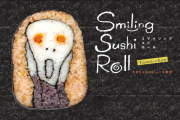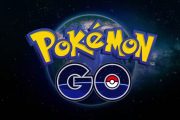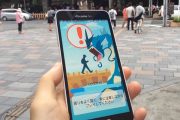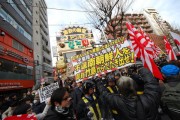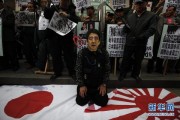Recent protests in Tokyo and Osaka by organisations such as the Zaitokukai, that seek to alienate minorities, shook ethnic communities within Japan.
But this detailed feature from the mazgazine Gendai Business by the well-known journalist Nishioka Kensuke suggests that citizens are starting to fight back, with a parade to counter the damaging effects of far right-groups on the community taking place in Osaka this month.
On Twitter, many netizens were extremely supportive of the movement, retweeting the article to their friends and supporting the central message of the movement; however, there were also those who felt that the movement itself was discriminatory, and urged others to see the inherent double standards of the citizen’s parade.
From Gendai Business:
“NO” To All Forms Of Discrimination! “OSAKA AGAINST RACISM Be Good To Each Other Parade” Born From “Hate Speech” Counter-Movement.
The gentle rays of sunlight that had just barely shone through the gaps in the clouds at dawn had started to singe the asphalt by noon. On this day, the temperature in Osaka reached 35 °C.
Voices in unison accompanied by light music resounded along the main North-South street of the city, which was enveloped in this sultry heat.
“Let’s do away with discrimination!”
“Let’s be good to each other!”
Behind the audio truck, which was piled high with huge speakers, a banner reads “OSAKA AGAINST RACISM”. Beyond that, people walk with placards that have messages such as “Hate Speech Is Bad”, and “Get Rid Of National Boundaries In Your Heart” written on them, and a group doing the traditional Okinawan dance “Eisa”, and a sound group playing all kinds of instruments follow. Bringing up the rear of the parade is the “Choson Dynasty Music Group”, who are dressed in traditional Korean garb.
Such is the scene at the “OSAKA AGAINST RACISM Let’s Be Good To Each Other Parade”, which was held on July 14, the last Sunday before the forthcoming Upper House elections.
On the middle day of a three day holiday, people going along the roadside stop at the bustling, colourful 700-strong crowd that has suddenly appeared in Midōsuji, which is crowded with families and couples, and foreign tourists passing by respond to the crowd with peace signs.
• A Counter Movement Against “Dirty Words”
Yet just two months earlier, words of hate had been spread through this main street in Osaka.
“Murder Koreans!”
“Oust The Zainichi From Japan!”
This was the hate speech (expressions that scorn people due to their inherent characteristics due of their race or ethnicity, to incite feelings of discrimination or hate) of racists from the “Zaitokukai” (Citizens Against Special Privileges of Zainichi Koreans).
These “dirty words”, which up to now had filled internet message boards, started to flow out into the streets of Shinokubo in Tokyo and Tsuruhashi in Osaka, where many Zainichi South Koreans and North Koreans (hereafter abbreviated as “Zainichi”) and a lot of newcomers to Japan live. And these were the incidents that began to upset those who live in these areas, and those who pass through these areas from the beginning of the year.
How the “main culprits” of the hate crime, the Zaitokukai and the so called “Netouyo” (internet right-wingers) came into being, how they behave and their specific ways of thinking can be found in detail in the book The Internet and Nationalism: Following The “Darkness” Of The Zaitokukai by Koichi Yasuda (published by Kodansha), but since around February, there have been movements in Tokyo and Kansai to stop the hate speech by these groups.
People who were no longer able to simply leave the Zaitokukai to spread hate and discrimination freely throughout the city started to face up the haters in the streets, and began to try and stop them from making hate speech. This is what is often called a “counter-action”.
As the name “counteraction” suggests, the activities are organised to take on demonstrations and campaigns using loudspeaker cars, but now the numbers of participants have increased so much that it easily outweighs the number of racists.
Born out of these counter actions was the parade that took place today in Osaka.
• A “Parade” That Sends A Message
The organizers of the parade were those that belong to a younger group of Zainichi and Japanese. Mr. S(41), works as a colour coordinator and is a 3rd generation Korean, and Mr. I (32), who studies nationalism in a private graduate school in the Kansai area.
The two met at one of the counter actions against the Zaitokukai that took place in Karasumaoike and Shijo Kawaramachi, Kyoto on April 20 this year.
Mr. S says: “The first time I took part in the counter action was on the March 31 in Tsuruhashi. (Which was against a loud speaker campaign by the Zaitokukai.) Until then I did criticize the ridiculous speeches made by the Zaitokukai and Netouyo over the internet. However since work was busy, I couldn’t participate (in the counter actions) much. When I did go and experience first hand the hate speech on the streets, I strongly felt that I couldn’t let these people spread hate and racism. So I started going about once in two weeks to counteract against these demonstrations and campaigns.
There, I met Mr. I, and got to know him, and around May, after the Golden Week I asked him if we could “organize something like a parade”. Although I think that counter actions are important, the main goal is to stop hate speech. So it is hard to convey to those around us why we’re doing this and there’s no time for it. So I thought that there needs to be a chance for us to send out our own messages.”
On the other hand, Mr. I says that he first attended a counter action on February 24, where the Zaitokukai and others went on a ”National Parade for Japan Korea Diplomatic Relations Severance” that took place in Tsuruhashi.
During the demonstration, a middle school girl made a speech saying “I hate (the Zainichi) them so much. I want to kill them”, “If you keep behaving like this, I will start not a Nanjing Massacre but a “Tsuruhashi Massacre”.
The public was shocked by the tender age of the speaker and its horrid content, which drew attention of the public to hate speech.
“Since then, i continued to participate in the counter actions on March 24 in Midosuji, and on March 31 in Tsuruhashi. What surprised me was that even in Tsuruhashi, once you go one street deeper into the town, there were people who didn’t have any idea that these demonstrations and campaigns even took place.
However, when I show the locals the videos of the demonstrations and campaigns that actually took place in Tsuruhashi, they all are surprised.
Since I thought it would be important to let the locals know what the Zaitokukai is saying and the contents of the hate speech, I agreed to the suggestion by S san about a “parade” which would allow us to send out our own message.”
• “We Don’t Allow Racism”
However, in the mere two months between Mr. S suggesting to Mr. I at the beginning of Golden Week that they have a parade and July, when the parade was actually held, the situation around them changed dramatically.
On May 7, when the Prime Minister, Abe Shinzo, was asked about hate speech in the House of Councillors, he answered that “It is highly regrettable that there are acts and speech that try to exclude certain nations and ethnic groups”.
Furthermore, the Minister of Justice, Tanigaki Sadakazu also stated on the 9th May that “This is highly concerning. This goes right against the notion as a noble nation”.
He later stated at a press conference that “Not only does this give people anxiety and disgust, it may also beget racism. This is extremely regrettable”.
As if to respond to these statements by the ministers, the police started to strengthen security measures against the demonstrations and campaigns by the Zaitokukai, and even against the counter actors that try to stop their hate speech.
During the Zaitokukai demonstration that took place in Shinokubo, Tokyo on June 16, 200 members of the Zaitokukai and the 350 counter actors faced each other, with some of them getting into skirmishes.
Together with 4 members of the Zaitokukai including their head, Takada Makoto (known as Sakurai), 4 members of the counter actors were arrested on the spot by police for violence.
“STAND AGAINST RACISM” — This flag was born through the counter action in Shinokubo, Tokyo.
On the day of the parade, Mr. I, who led the parade at the front told us:
“Since the arrest of the Zaitokukai members and the counter actors, 4 of them each, made the impression to the media and internet that “both the Zaitokukai and the counter actors are both to blame”.
This is despite the fact that all 4 members of the counter actors are all victims.
There is no way that the racists that repeat hate speech calling the Zainichi “cockroaches”, “parasites”, using words such as “die”, “kill them”, and those who are trying to stop them are “both to blame”.
Since such a thought is spreading, it is important for us to spread our thought through a “parade”, which is not a counter act.”
Mr. S, who was at the very end of the parade heading the “Choson Dynasty Music Group” said the following:
“As Mr. I says, even in Tsuruhashi, there are people who do not know about the Zaitokukai campaigns. Even more so for Osaka city.
I also live in the south part of Osaka city, but most people haven’t even heard of the name Zaitokukai.
However, when I tell them about the contents of hate speech (by the Zaitokukai), they all of course say “That’s not good”.
So I thought for a start I wanted the Osaka people to learn about what crazy things they are saying, as well as sending out a message to the world that ‘we don’t allow racism'”.
• “Osaka City Does Not Allow Any Kind Of Discrimination!”
As the parade neared the end, around 2pm, another disabled people’s group were asking passers by to donate for a event in the Nanba crossing that the parade went through.
It was the secretariat members of the “Senshu TRY 2013”, a parade that aims to legsilate anti-discrimination against disabled persons.
They are aiming to legislate “anti discrimination law against disabled persons”, and to stop the train stations in “Nankai Dentetsu”, which was previously private, to become unmanned. The parade will start on the 25th of August and will take place over a week, where they will walk over 60 km from Misakimachi to Nanba in Osaka.
As the parade crossed the Nanba crossing, when the parade’s MC saw the wheelchaired members, waved and called out to them.
“We are not just against racism! We are saying “NO” to all discrimination, be it sexism or against disabled people! Osaka does not allow any kind of discrimination!”
As if to answer, a woman on an wheelchair went forth up to the street, pushing the lever of her electric wheelchair.
“Let’s be good to each other” “Let’s be good to each other”…
Repeating his words in a small voice, she saw off the parade until the very end passed by.
At the “anti-discrimination” crossing, many different people meet, and syncronise their thoughts…
The “counter actors” against hate speech, the “parade” that was born out of it.
The encircling net cast against the discriminators by “those who do not permit it” is surely being closed.
Nishioka Kensuke
Born in Osaka in 1967. Entered the Kobe Newspaper Company, reported on stories such as the Great Hanshin Earthquake and the Kobe child murders. Later, he became and editor at the magazine “Uwasa no shinso”, a reporter for “Shukan Bunshu”, and “Shukan Gendai”, and is now a freelance journalist. He received the Kodansha Prize for Non-Fiction in 2008, for “Mangrove: What Really Happened When JR East Was Hijacked By Terrorists”.
Comments from Twitter:
本城賢正:
It’s a lie to say that “Osaka won’t permit any form of discrimination!”, it’s really only him and those who think like him who won’t discriminate. So this whole thing is futile.
ぼすけん:
Good job!
渡部真:
This is the kind of thing I’d expect from Nishioka.
佐々木中@『夜を吸って夜より昏い』刊行:
Great article.
石川 公彌子:
A good article where the author’s viewpoint is clearly written without being too forceful RT @biriksk
K*Shige:
The fact that this kind of wonderful movement was barely seen in the news is really sad…★
zkhi :
Rather than “OSAKA AGAINST RACISM”, to write in Japanese that “Osaka doesn’t permit any form of discrimination!” can be understood quickly and clearly by anyone, and has mass appeal (ie, it doesn’t discriminate).
がく@大阪のGAY 相方募集中!
The beginning of a hot summer. We’re all going to live together. We’re going to live supporting each other. Social exclusion → to social inclusion → to no forms of discrimination.
中国・韓国に媚び媚びのNHKはイラナイ:
Yeah, and meanwhile, in Korea, there are outbreaks of Japanese hunting.
kkttky:
Saying “No” to all forms of discrimination! Those people who insist that we should get rid of “hate speech” “netouyo” “racists” are the people who label others and discriminate. It’s like they’re stupid. But the thing is, it’s going to be dangerous if minorities start supporting them.
chappie:
I’m posting this link because if we don’t keep getting the message of the movement through to the people who didn’t participate, then an anti demonstration movement will be born.
龍翔(りゅうと):
Yeah but they’re saying “Kill the racists”. When are they going to realise that this is a double standard?
伊達邦彦:
Tears were falling at that part about the disabled participants calling out the slogan. It’s pointless if Japan isn’t a country where everyone can live comfortably.
gatemouth café:
An amazing article!
taka:
At any rate, the only people saying this are zainichi Koreans and disabled groups, who can only shout. When they were writing RACISM, that’s discrimination against the elderly who might be uncomfortably with English. w If you’re against discrimination, then how about oppositing “Ladies Day” [a day when women can go to the cinema for 1000 yen] first of all?
日本に革命する力を:
Say NO to all Koreans! @rinda0818
